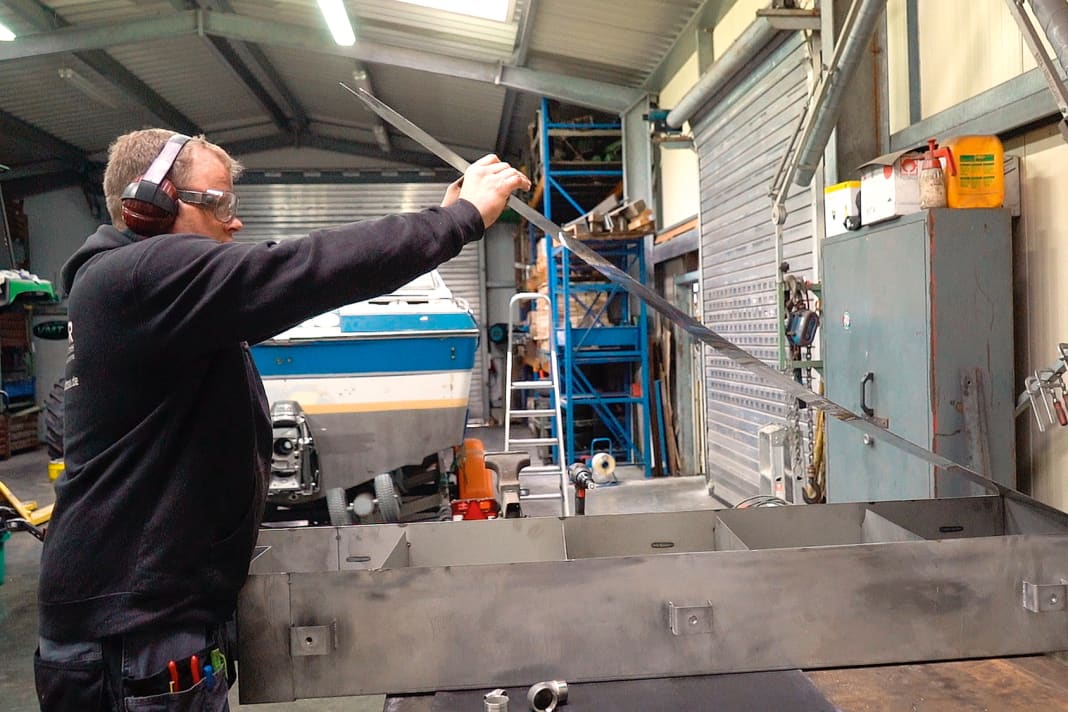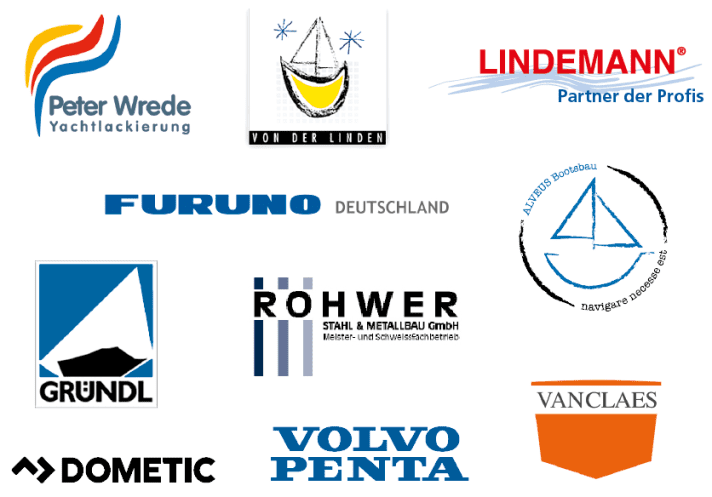





All episodes of the refit project:
- Part 1: Stocktaking
- Part 2: Replacing the rear view mirror
- Part 3: The underwater hull
- Part 4: GRP repairs
- Part 5: Antifouling coating
- Part 6: The motor foundation
- Part 7: The stringer system
- Part 8: The new engine
- Part 9: The new tank
- Part 10: The interior fittings
- Part 11: The interior work continues
- Part 12: The side panelling
- Part 13: Surface treatment and colour
Power comes from fuel, say the engine people. It's a truism, of course. Because the new 240 hp engine clearly has more of the former than its predecessor, a larger petrol tank is on the "refitter's" shopping list. Nothing from the accessories catalogue, it should be tailor-made and made of stainless steel and have a capacity of around 200 litres. We go in search of someone who can build a fuel tank to our specifications and finally find what we are looking for at Rohwer Metallbau in Nortorf, Schleswig-Holstein.
It all starts with a sketch made on board. At Rohwer, this is a matter for the boss. The boss's hand-drawn floor plan is turned into a perfect construction plan in the metalworker's drawing office, complete with an "order form" for the required construction material. The 2 mm thick steel sheets delivered just in time are cut to the millimetre using modern laser technology and shaped on the folding bench. The prefabricated components, including three baffle plates that prevent the fuel from wobbling back and forth while driving, are then welded using the tungsten inert gas process. You have to be able to do that! Nils Jöhnk, Rohwer's man on site, can do it, he has it in writing. Advantages of the TIG process: there is no welding spatter and significantly less distortion of the workpieces.
The stainless steel tank requires special treatment
During the subsequent test fitting in the boat, the exact positions for the hand-made (90 degree bend and suitable length) riser pipe - the supply line to the engine - and the connection pieces for the filler pipe and the tank ventilation are marked. A centre punch, which marks the holes to be drilled with a hammer blow, prevents the drill from slipping during drilling. Important when drilling in stainless steel: the right drill bit quality (HSS = high-speed steel), low speeds and cooling cutting oil.
To avoid (bodily) injuries and simply because it looks better, the razor-sharp edges at the interfaces are then carefully deburred with a finishing file and a crimping countersink. Once the pipe and the hose connections have been inserted and welded and the inside of the tank has been thoroughly cleaned with a hoover and wiping cloth, the "cover" is put on and the welder gets to work. In the penultimate work step "on land", the finished tank is pressurised with 0.3 bar air pressure. Once everything is tight, the entire tank is placed in a "pickling bath", which cleans the stainless steel and protects it from corrosion.
After soaking in the stain, the tank is forklifted into the boat and bolted into place with solid bolts and shims through the longitudinal stringers. If you have measured and marked out precisely before drilling, you will save yourself a lot of annoying reworking. Sturdy rubber discs are placed on the bolts between the stringers and the lugs welded to the tank to act as shock absorbers in rough water.
Building and installing a tank is not for hobbyists
We change the "scene of the crime" and mark the positions for the filler neck and tank ventilation on the starboard side of the deck mould. Drill holes in the glass fibre reinforced plastic using suitable hole saws. A tip: always pre-drill small holes so that nothing goes wrong. In the final step, the fuel-resistant hoses are laid and fastened to the connecting pieces on deck and on the tank using rust-proof hinge bolt clamps.
Conclusion: It is clear that tank construction is not for hobbyists. It requires specialists with experience, the necessary "certificates" and plenty of special tools. In a word: professionals. They sometimes end up with a hefty bill - €5,800 for our customised stainless steel tank including installation - but they guarantee first-class quality at all times. And that is important, especially for a petrol tank.
Video of the refit project
The BOOTE Refit project is supported by


